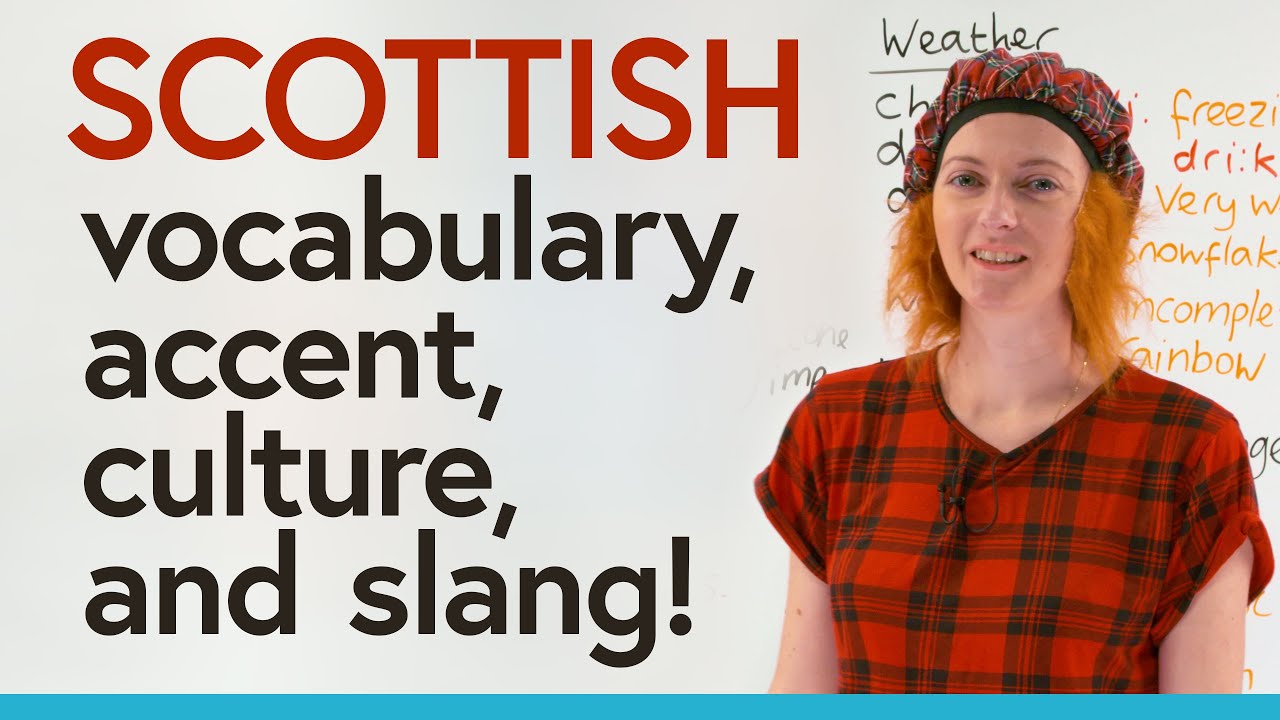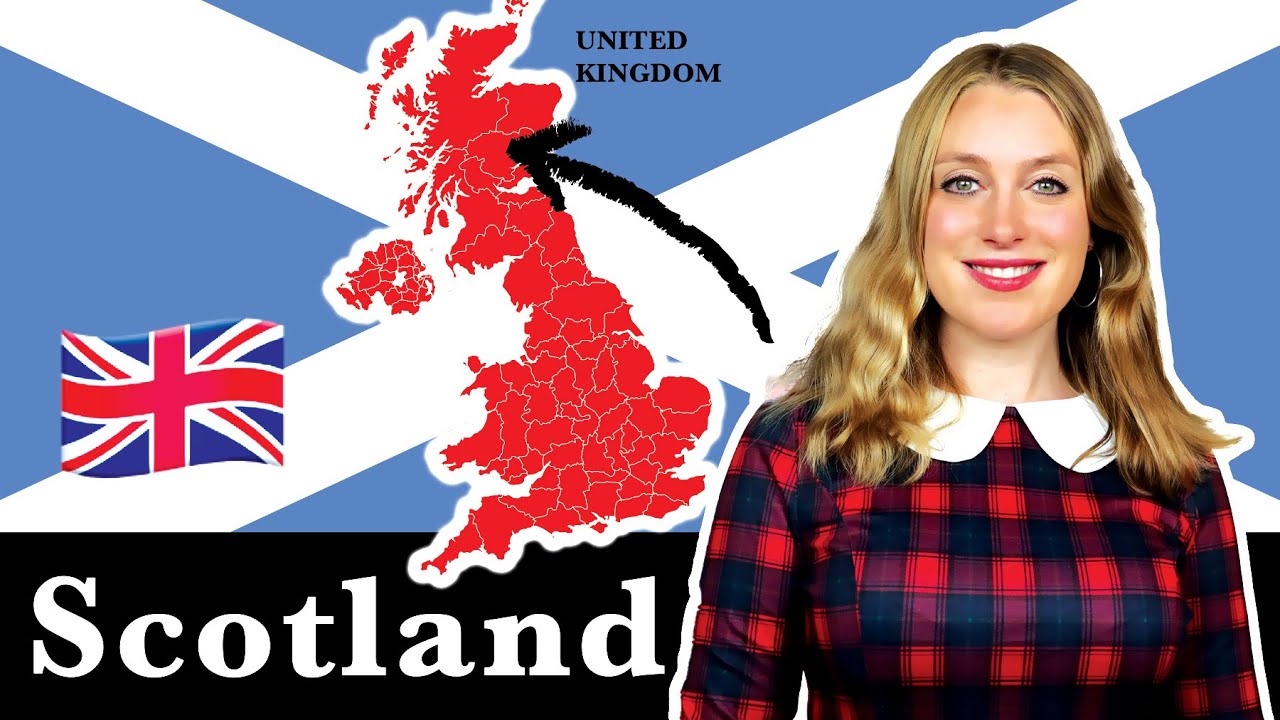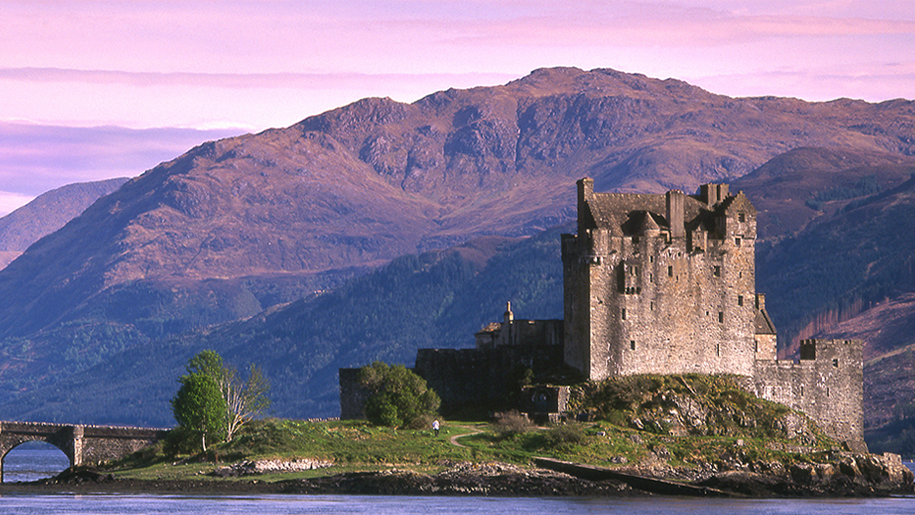Scottish Accent Explained - History, Dialects And Pronunciation Tips
Master the Scottish accent with this comprehensive guide. Learn about its history, regional dialects, and get practical pronunciation tips to improve your understanding.
Mar 13, 20255.8K Shares127.5K Views

The Scottish accentis one of the most unique and easily recognized accents in the world. It often brings to mind images of beautiful highlands, bagpipes, and a culture rich in history and traditions. However, beyond these common ideas, the Scottishaccent carries a deep cultural importance and has a long, interesting history.
You may have heard it in a film or experienced it firsthand in Scotland; the Scottish accent stands out with its distinctive sounds and rhythms shaped over many centuries. What makes this accent so special, and how did it develop into what we know today?
This article reveals the fascinating world of the Scottish accent, looking at its characteristics, different types, history, and the cultural significance that makes it so cherished.
Understanding The Scottish Accent

Learn about the SCOTTISH accent, dialect, and slang!
The Scottish accent is not a single entity; rather, it encompasses a wide range of regional variations that make it particularly unique. While the English language itself is spoken in various forms across Scotland, the accent varies dramatically based on geographic location, social class, and even personal influences. For example, the difference between the Glaswegian accent in Glasgow and the more refined Edinburgh accent is immediately noticeable.
The Scottish accent has a rich history, influenced by several factors, including Old English, Gaelic, Norse, and French, creating a tapestry of sound and rhythm that is uniquely Scottish. At its core, the Scottish accent is a product of both historical and cultural factors that date back hundreds of years. This connection to history and the way of life is deeply intertwined with Scotland's customs and culture.
It is often said that the Scottish accent retains a strong connection to the old English language of Shakespearean times, as it hasn’t undergone as many of the changes in phonetics that have affected English accents elsewhere in the UK. This historical depth is one of the reasons the accent is so alluring to listeners around the world.
The Varieties Of The Scottish Accent
One of the most remarkable features of the Scottish accent is its variety. Scotland is home to several different dialects, each with distinct characteristics and unique pronunciations. Let’s take a closer look at some of the most prominent regional accents:
1. Glaswegian Accent (Glasgow)
The Glaswegian accent is one of the most recognizable and distinctive Scottish accents. Known for its strong, guttural sounds, it’s often described as being rapid and clipped. Glaswegians tend to drop the 'h' sound in many words, making the accent sound even more unique. Additionally, the “r” sound is typically rolled, a feature found in many Scottish accents, and the vowels are often shorter and sharper. If you're intrigued by these unique sounds and want to experience them in person, plan your travel to Scotlandtoday.
2. Edinburgh Accent
In contrast to Glasgow’s strong and sometimes abrasive sound, the Edinburgh accent is often described as more refined and softer. The accent here is influenced by the city’s history as a center of education and culture. Edinburgh residents tend to speak with clearer enunciation, making it somewhat easier to understand than other Scottish accents.
3. Highland Accent
The Highland accent is associated with the rural areas of northern Scotland. This accent is heavily influenced by Gaelic, the ancient Celtic language of Scotland. The speech patterns are slower and more melodic, with rolling "r"s and softer consonants. The Highland accent is often seen as being more “traditional” and is beloved for its musicality.
4. Aberdeen Accent
The Aberdeen accent, also known as the Doric dialect, is quite distinctive and unique. This accent, spoken in the northeast of Scotland, is known for its use of the “ae” sound and heavy influence from the Scots language. Aberdeen speakers also have a particular way of handling vowels, giving their speech a rhythm that sets it apart from other Scottish accents.
5. Isle Of Skye And Western Highlands Accent
In the Western Highlands and on the Isle of Skye, you’ll hear an accent that’s deeply influenced by Gaelic, with unique sounds and intonations. This accent is often associated with the rural, isolated communities of the islands, and its tone is typically slow and measured.
For better visuals and understanding of the scottish accent, click on the video below

An Introduction: the SCOTTISH accent!! | Scottish Culture 🏴 🇬🇧
How The Scottish Accent Has Evolved
The evolution of the Scottish accent is tied to the history of Scotland itself. From the influence of the Celts, who brought the Gaelic language, to the Viking invasions that left their mark on Scots, the Scottish accent has undergone various stages of transformation. In the early ancient period, Old Scots developed as a variant of Old English, influenced heavily by the Gaelic language of the Scots and the Norse language brought by the Vikings.
As the centuries passed, the Scottish accent absorbed influences from all over Europe, including French during the Middle Ages, and the language became more distinct from its English counterpart. By the time of the Scottish Enlightenment in the 18th century, the Scottish accent began to be perceived as more refined, particularly in Edinburgh, which was regarded as the intellectual capital of Scotland.
During the 19th and 20th centuries, the spread of mass media and the decline of Gaelic speakers led to a more uniform Scottish accent. However, regional differences have persisted, and the accent continues to evolve, adapting to the influences of globalization and migration.
Key Features Of The Scottish Accent
The Scottish accent is characterized by several distinctive features that make it stand out from other English accents. Let’s look at some of the key phonetic characteristics:
1. Rolled “R”
The rolled “r” is perhaps the most iconic feature of the Scottish accent. Whether spoken quickly or slowly, the “r” sound is pronounced with a vibrancy that’s almost musical. This rolling of the “r” adds depth and flavor to the accent.
2. Vowel Sounds
Scottish vowels are sharp and clear. Unlike some other accents in the UK, where vowels can be softened, Scottish vowels are crisp and precise. For example, in the word “cat,” the vowel is typically pronounced with a short, hard “a” sound, which contrasts with the more rounded vowel sounds in other accents.
3. Dropped Consonants
Another feature of the Scottish accent is the dropping of consonants. For instance, the “h” in words like “house” may be dropped, or the “t” sound in words like “butter” might be replaced with a soft “d.”
4. Syllable Stress
The Scottish accent is known for its rhythmic, almost musical quality, which is partly due to how syllables are stressed. While many accents have a more monotonous tone, Scottish speech tends to have a more pronounced rise and fall in pitch, making it sound dynamic.
How To Say Hello In Scottish Accent

How To Say 'Hello, how are you?' in Scottish Gaelic (With Phonetics)
In a Scottish accent, "hello" is typically pronounced as it is in standard English, but the way it's said can vary depending on the region. Here are some common ways to greet someone in Scotland:
- "Hullo" or "Hallo"- A very common and casual way to say hello, pronounced with a slightly more open "o" sound compared to standard English. This is common in many parts of Scotland.
- "Aye"- While this technically means "yes," it can sometimes be used informally as a greeting, especially in the west of Scotland or in Glasgow.
- "How’s it gaun?"- This is more of a Scottish way of asking, "How’s it going?" It’s widely used in informal settings, especially in the central belt, including Glasgow. It can be seen as a greeting, as well as a check-in on someone’s well-being.
- "Fit like?"- This is a greeting used in the northeast of Scotland, particularly around Aberdeen. It translates roughly to "How are you?" or "What's up?"
So, depending on where you are in Scotland, the greeting can have different variations, but "hullo" is probably the most universally understood in Scottish English.
Why The Scottish Accent Is So Appealing
The Scottish accent has earned worldwide admiration for several reasons. For one, there’s a charm and warmth to the way it sounds. For many, the accent invokes feelings of comfort and friendliness. It’s often seen as deeply rooted in tradition, evoking images of the rugged Highlands, castles, and rolling hills.
Furthermore, the Scottish accent is perceived as having a musicality that’s unique. It’s not just an accent; it’s a rhythm and melody that draws listeners in. Many people find themselves enchanted by the lilting tones of Scottish speech, often associating it with intelligence, strength, and warmth.
The Scottish Accent In Popular Culture
The Scottish accent has gained worldwide recognition in cinema, television, and music. Celebrities such as Sean Connery, Ewan McGregor, and Susan Boyle have contributed to elevate the Scottish accent to global prominence. When it's Connery's smooth and seductive voice as James Bond or Boyle's soaring vocals, Scottish accents have become linked with charm and power.
Furthermore, the Scottish accent has been used in numerous films, lending authenticity to characters from the harsh highlands or the busy streets of Glasgow. The accent's cultural significance cannot be overstated; it is as integral to Scottish identity as the countryside and history. To truly immerse yourself in this rich cultural experience, including hearing the diverse accents firsthand, be sure to check out our Scotland vacation tips.
Challenges Of Understanding The Scottish Accent
While the Scottish accent is beloved by many, it can also present challenges for listeners who are not familiar with its sounds. The rapid pace, unique vocabulary, and particular phonetic features can make it difficult for non-native speakers to understand.
In particular, accents like Glaswegian can be hard for some to decipher due to the clipped pronunciation and regional vocabulary. However, with time and exposure, many people find that they can begin to understand the nuances of the Scottish accent.
If you ever find yourself in Scotland and struggling to understand, don’t hesitate to ask for clarification. Most Scots will be happy to repeat or slow down their speech, ensuring that communication remains clear.
Pronunciation Tips For Speaking With A Scottish Accent:
- The 'r' sound is strongly rolled or trilled, especially after vowels. Words like "bird" become "birrrd" with a vibrating 'r'. This is one of the most distinctive features of Scottish pronunciation.
- The 'o' in words like "home" and "go" is pronounced as a pure vowel sound, more like "hame" and "gae". It doesn't glide into a 'w' sound like in standard English.
- Words ending in "-ing" typically drop the 'g', becoming "-in". For example, "walking" becomes "walkin'" and "talking" becomes "talkin'". The final 'g' is very soft or absent.
- The 'oo' sound in words like "boot" and "food" is pronounced shorter and higher, closer to the vowel in "good". "Boot" sounds more like "bit" with a longer vowel.
- The word "house" is pronounced more like "hoose", with the 'ou' sounding closer to "oo". Similarly, "mouth" becomes "mooth" and "out" becomes "oot".
- The 'wh' sound at the start of words is pronounced distinctly from 'w'. "Which" and "witch" sound different, with "which" having a more aspirated beginning, almost like "hwitch".
- The 'ai' sound in words like "face" and "rain" is pronounced as a pure vowel, closer to "eh". "Face" becomes more like "fess" and "rain" like "ren".
- The 'th' sound often becomes 't' or 'd'. "That" might become "tat" and "this" might become "dis". This varies by region and individual speaker.
- The word "all" is often pronounced as "aw", and "old" becomes "auld". This 'au' sound is deeper and rounder than in standard English.
- Glottal stops are common, especially in words with 't' in the middle or end. "Water" becomes "wa'er" and "better" becomes "be'er", with the 't' sound replaced by a brief closure of the throat.
Tip: Remember that Scottish accents vary significantly by region, from Glasgow to Edinburgh to the Highlands, so these tips are general guidelines rather than strict rules.
FAQs
What Movie Has A Scottish Accent?
Beyond its narrative significance, the Scottish accent in "Braveheart" has become iconic and synonymous with the film itself. It has left a lasting impression on audiences worldwide and has become a recognizable symbol of Scottish history and culture
What Is The Most Famous Scottish Accent?
The Glaswegian accent is perhaps the most well-known due to its association with Scotland’s largest city, Glasgow. It’s instantly recognizable and often portrayed in media.
Why Is The Scottish Accent So Hard To Understand?
The Scottish accent can be challenging due to its rapid pace, distinctive phonetic features, and regional vocabulary. Words are pronounced differently, and some sounds, like the rolled “r,” are uncommon in other accents.
How Many Accents Are There In Scotland?
Scotland is home to many different accents, including Glaswegian, Edinburgh, Highland, Aberdeen, and the accents of the Western Isles. Each one has its own unique features.
What Does Tìoraidh Mean?
Tìoraidh means “cheerio” in Scottish Gaelic. This motif has something of a cheery wave about it, and, in both the charting and the knitting, it kept saying Tìoraidh to me.
How Do You Say Hello In A Scottish Accent?
In a Scottish accent, "hello" is typically pronounced the same as in standard English, but the pronunciation can vary depending on the region.
Final Words
Rich cultural legacy, intriguing history, and emotional resonance are all represented by the Scottish accent. It is one of the most fascinating accents in the world because of its numerous regional dialects, distinctive phonetic characteristics, and widespread appeal.
The Scottish accent continues to play a significant role in Scotland's identity and the larger global discourse, regardless of if you are charmed with the musicality of Highland speech or the fast-paced rhythm of Glasgow.
Jump to
Understanding The Scottish Accent
The Varieties Of The Scottish Accent
How The Scottish Accent Has Evolved
Key Features Of The Scottish Accent
How To Say Hello In Scottish Accent
Why The Scottish Accent Is So Appealing
The Scottish Accent In Popular Culture
Challenges Of Understanding The Scottish Accent
Pronunciation Tips For Speaking With A Scottish Accent:
FAQs
Final Words
Latest Articles
Popular Articles
